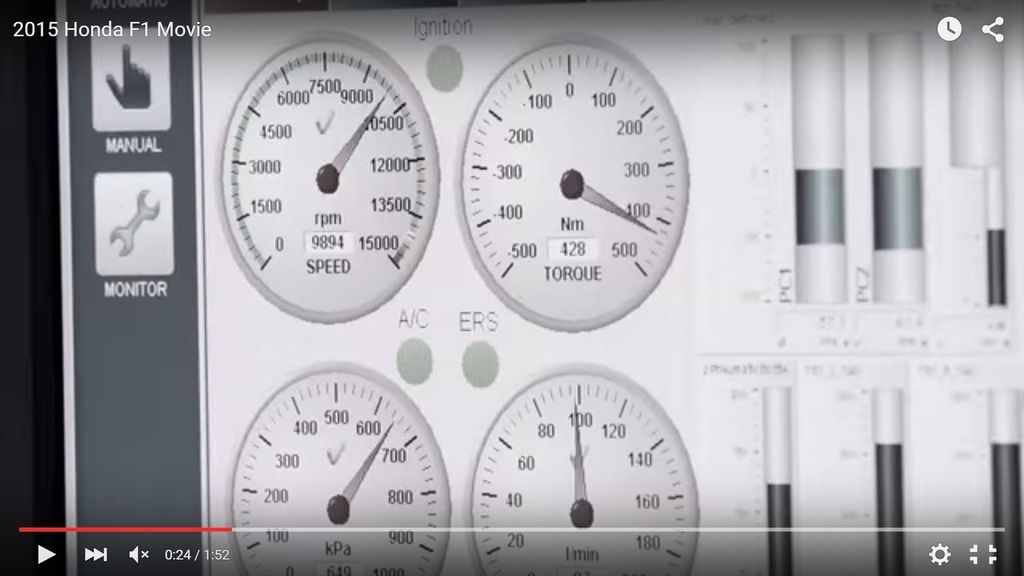Abarth wrote:Seems a transient or part load condition.
Interestingly enough, the fuel pressure is 300 bar. I thought Honda was adopting pump/injectors with 500 bar capability (the limit of the regulations).
Everything else we hear about 500 bar in the 2015 Mercedes has not been confirmed yet so it is a bit of a crapshoot. This could also be a very old screen too. Honda might have upgraded to 500 bar since then. Again we have not confirmation of this... so it anyone's guess.
Another interesting thing is the flow into the fuel flow meter is different from the flow through the injectors. I guess it depends on how they integrate the instantaneous values.
The fuel is hot too. 70 deg as someone else pointed out. I think this temperature rise is from pumping the fuel and heat transfer from the cylinder head?






